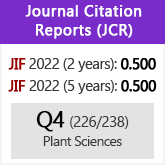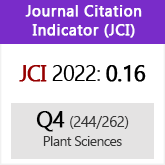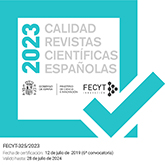Descomposición de helófitos en un humedal semiárido hipertrófico
DOI:
https://doi.org/10.3989/ajbm.2004.v61.i1.66Keywords:
Cladium mariscus, decomposition, hypertrophic wetland, LasTablas de Daimiel National Park, leaching, nitrogen, phosphorus, Phragmites australis, SpainAbstract
This study represents the first attempt to outline the dynamics of litter decomposition of Cladium mariscus (cut-sedge) and Phragmites australis (common-reed) in Las Tablas de Daimiel National Park (Central Spain). From April 1998 to September 1999, two experiments were conducted to measure the overall decomposition in large-pore bags (7 months) and the chemical-microbiological decomposition in entire bags (14 months). Despite the hypertrophic condition of the wetland, that might have enhanced plant litter decaying rates, decomposition was a slow process in Las Tablas de Daimiel for both species, resulting in more than 50% of initial biomass a year and a half later. There were no significant correlations between environmental variables and decomposition rates. An initial phase of leaching with the highest rates (P < 0.05) of mass loss and nutrients occurred for both plant species. Throughout the incubation period, no significant differences were observed between both species and experiments, and the average daily rates of mass loss were low: 0.0022 ± 0.001 day–1 for C. mariscus and 0.0029 ± 0.002 day–1 for P. australis in the overall decomposition experiment, and respectively 0.0019 ± 0.001 day–1 and 0.0016 ± 0.001 day–1 due to chemical-microbiological decomposition, suggesting the negligible significance of invertebrates in the plant decomposition process. Furthermore, no significant difference was observed for nutrient release, except that Phragmites lost more phosphorus (P < 0.1) than Cladium. Plant litter decaying rates were roughly an order of magnitude lower than nutrient release rates in both species. Our results suggest that slow decomposition rates of helophitic plant biomass increases organic matter sedimentation and reduces water quality of Las Tablas de Daimiel National Park.
Downloads
Download data is not yet available.
Downloads
Published
2004-06-30
How to Cite
Ribeiro Orge, M. D., Álvarez Cobelas, M., Riolobos, P., & Cirujano, S. (2004). Descomposición de helófitos en un humedal semiárido hipertrófico. Anales Del Jardín Botánico De Madrid, 61(1), 53–61. https://doi.org/10.3989/ajbm.2004.v61.i1.66
Issue
Section
Articles
License
Copyright (c) 2004 Consejo Superior de Investigaciones Científicas (CSIC)

This work is licensed under a Creative Commons Attribution 4.0 International License.
© CSIC. Manuscripts published in both the printed and online versions of this Journal are the property of Consejo Superior de Investigaciones Científicas, and quoting this source is a requirement for any partial or full reproduction.All contents of this electronic edition, except where otherwise noted, are distributed under a “Creative Commons Attribution 4.0 International” (CC BY 4.0) License. You may read here the basic information and the legal text of the license. The indication of the CC BY 4.0 License must be expressly stated in this way when necessary.
Self-archiving in repositories, personal webpages or similar, of any version other than the published by the Editor, is not allowed.
















